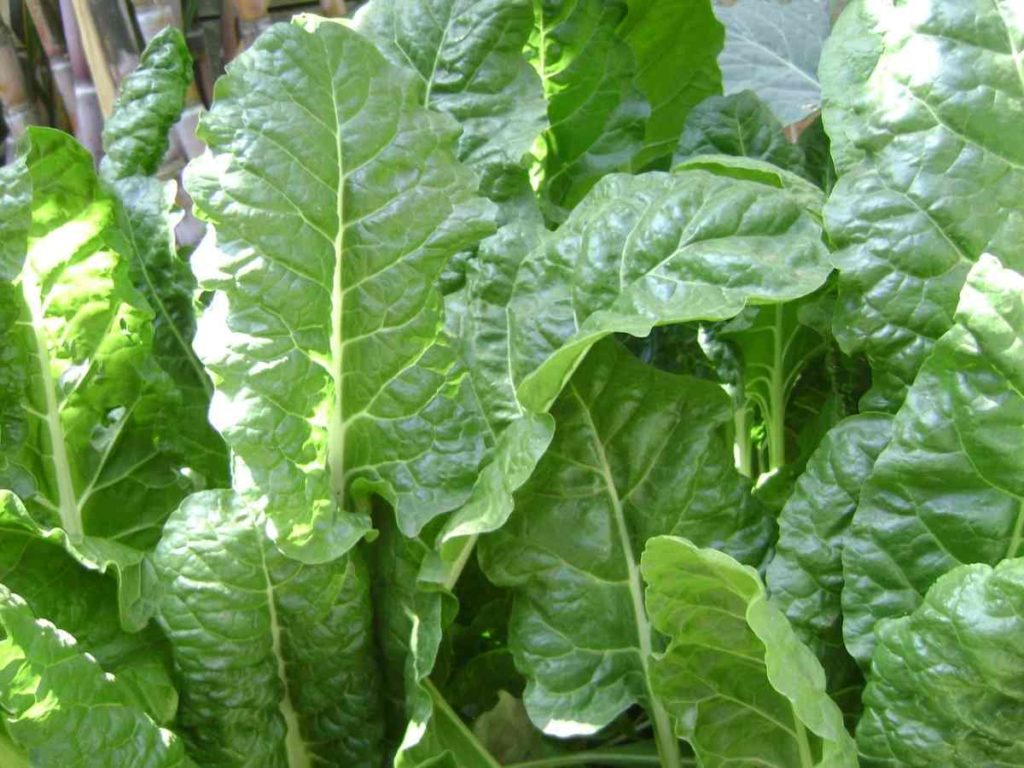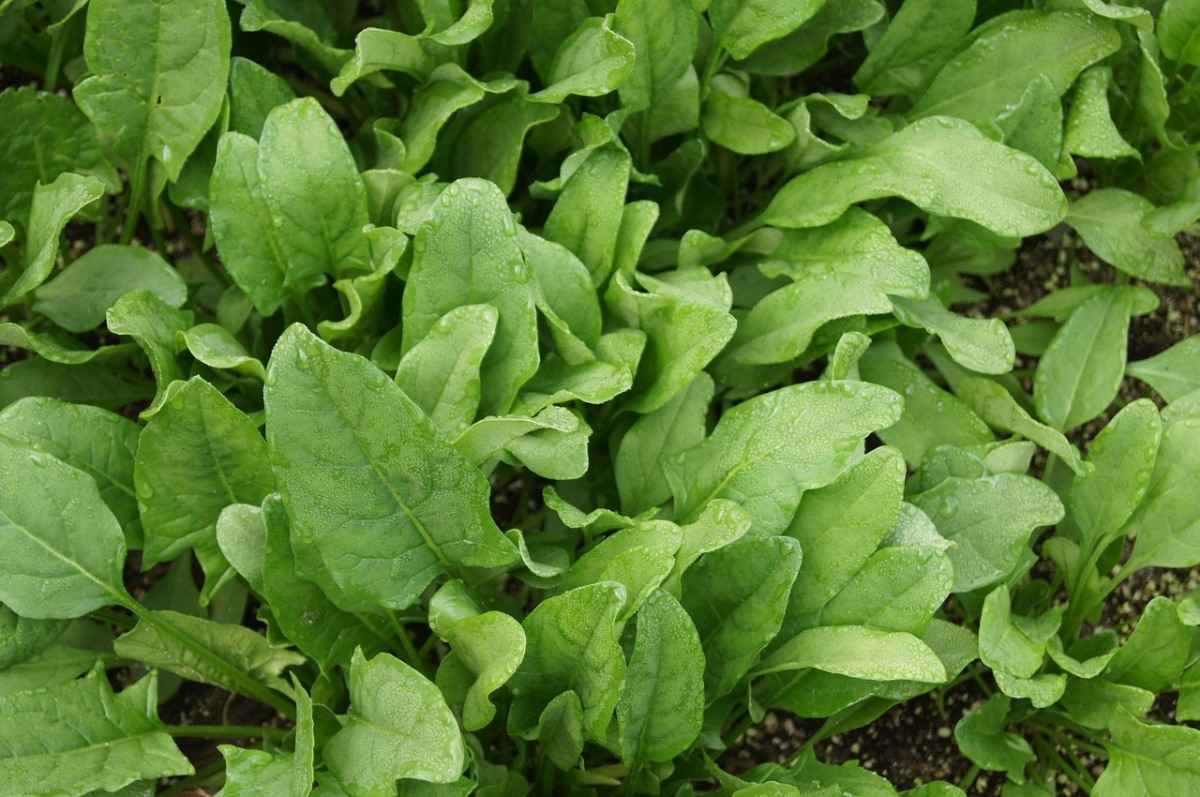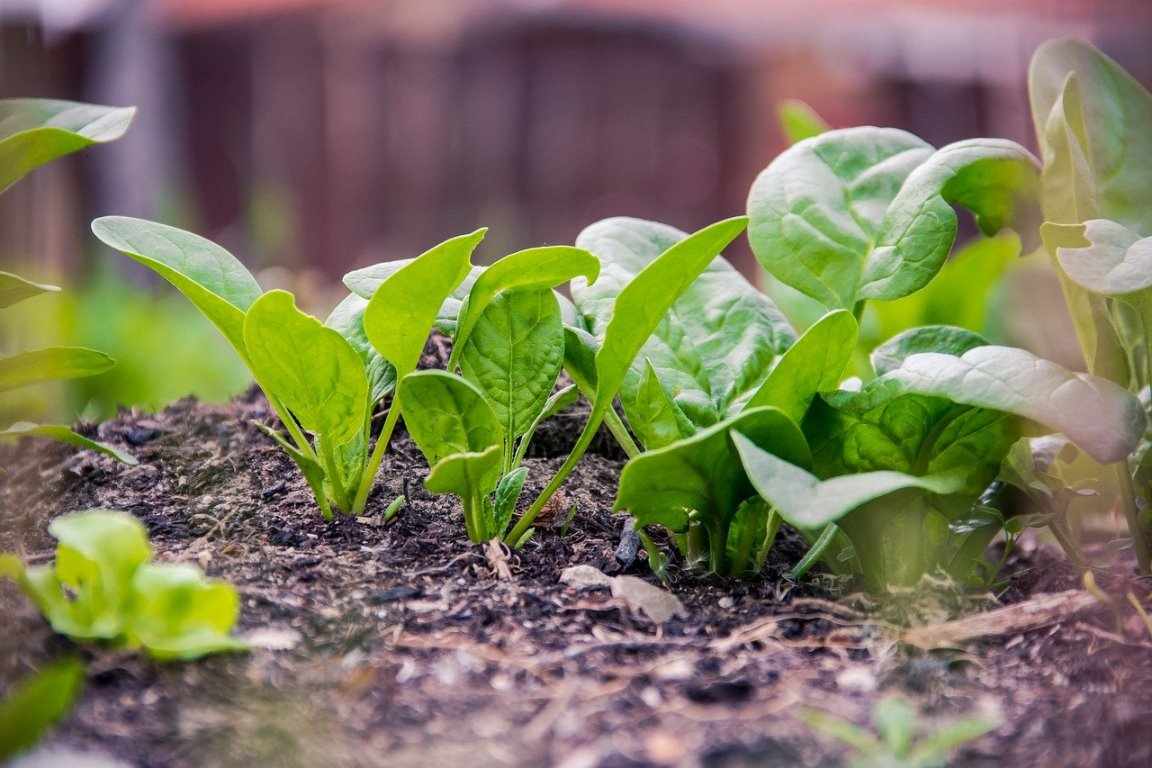Introduction to Spinach Companion Plants, Spinach Planting Guide: Companion planting is a terrific method to make your garden more efficient. There is almost certainly a beneficial companion plant for almost every food you grow that will assist enhance soil nutrients, deterring pests, and help you get the most out of your garden.
Spinach (Spinacia oleracea) is a leafy green vegetable with Persian origins. It is linked to beets and quinoa and belongs to the amaranth family. It’s also believed to be highly nutritious, as it’s high in minerals and antioxidants.
A Guide to Spinach Companion Plants, Planting Tips, Ideas, and Growing Requirements

Spinach Companion Plants Table And Why Is It Good To Plant Near Spinach?
| Spinach Companion Plant | Why is it good to plant near spinach? |
| Leeks | Keep pests at bay |
| Nasturtiums | Keeps pests at bay |
| Kale | Feed on a variety of nutrients |
| Brussels Sprouts | Feed on various nutrients |
| Cauliflowers | Don’t deplete spinach’s nutritional value |
| Collard Greens | Doesn’t deplete the nutritional value of spinach |
| Kohlrabi | Feed on a variety of nutrients |
| Broccoli | Don’t deplete spinach’s nutritional value |
| Cabbage | Feed on a variety of nutrients |
| Strawberries | Pests will be deterred, and pollinators will be attracted |
| Peas | More effective utilization of space. |
| Radishes | Deter pests by loosening the soil |
| Beans | Provide shade and help the soil fix nitrogen |
| Asparagus | Loosens the soil |
| Eggplants | Keep pests at bay |
| Petunias | Attract pollinators to your garden |
| Marigolds | Attract pollinators to your garden |
Basic Requirements for Growing Spinach
In case if you miss this: How To Grow Hydroponic Plants.

- Suitable soil for growing spinach
Commercial spinach is grown in deep, loamy soils. If your garden soil is acidic (pH below 7), use lime to raise the pH to 7.0, as determined by a soil test. Many gardeners prefer raised beds that are 6 to 8 inches above the current soil, especially if their soil is thick clay.
Step 1: Dig down deep into your dirt to loosen it up.
Step 2: Fertilize with fertilizer, dung, or compost.
Step 3: Thoroughly mix soil, fertilizer, manure, or compost using a garden fork, then even out with a rake.
- Sunlight requirement for growing spinach
Spinach is a cool-weather vegetable. It’s a fast-growing plant that produces a lot of leaves in a short amount of time in the spring and fall when the temperature is favourable. Even while spinach likes full light, it can still produce a good harvest in partial shade.
How about this: How To Start Greenhouse Gardening.

When you look at the growing needs on spinach seed packaging, you’ll notice that it grows best in full to partial sun. Full sun is defined as six or more hours of direct sunshine per day, whereas partial sun is defined as four to six hours of direct sunlight per day.
- Water requirement for growing spinach
Similarly, spinach requires a lot of water while also requiring efficient drainage. Finally, only take a few leaves from each plant at a time. This will help the plants to produce throughout the entire season.
For spinach, 1 inch of water every week is good, but in somewhat warmer weather, you may want to increase it to 1.5 inches. A series of shallow watering is preferable to a single strong watering.
- Fertilizer for growing spinach
You can use a balanced fertilizer once your spinach plants have established themselves. It’s good that a fertilizer with a little more nitrogen would be even more effective. A successful combination is 10-10-10; however, a 15-10-10 is ideal. Use a granular fertilizer before planting.
During the growing season, fertilize spinach every 2 to 3 weeks. Use a granular fertilizer as a side dressing along the edge of the row every month or so if you wish to use it while the plants are growing.
Why Grow Companion Plants With Spinach (Advantages)?
While most people believe that simply growing veggies is the best option, this is not always the case. Planting the right partners, among other things, will help them develop. Here are some reasons why you should grow spinach with other plants:
- Better space utilization
When planting spinach alone, you need to split the plants into rows and columns, providing plenty of room on the sides and surrounding them. You can plant the seeds closer together with buddies and not squander a single inch of space.
- Pests and diseases are less prevalent.
It is easier for illnesses to spread when spinach is grown too close to other spinach plants. Diseases will not have to strain to spread from one plant to another, even if they aren’t too tight. Pests are the same way; if there are no plants to attract or repel them, they will devour all of your spinach.
- Increased vegetable flavor
Surprisingly, certain companions make spinach taste even better. Plants that supply certain nutrients to the soil will improve the flavour of the spinach over time.
- Increases growth
Some plants can protect spinach from the sun and eventually give beneficial nutrients to the soil, allowing it to grow quicker and healthier. This is especially true when the spinach is just starting to sprout.
Top 8 and Best Spinach Companions
- Brassica
This plant family pairs well with spinach and this combination allow you to create a more varied garden in a little space.
They can be planted near together, even inter-planted, without danger of nutrition and space competition. Their root systems typically grow at different depths and receive nutrients from various levels of the soil.
- Peas
Inter-planting peas with spinach save both time and area, making it a very cost-effective option. Peas get their nitrogen from the air, so they don’t need a lot of it in the soil.
It’s an excellent idea to inoculate the peas. Coating seeds with an inoculant will increase yields by improving the performance of nitrogen-fixing bacterial nodes on the roots.
- Garlic
Garlic repels aphids, flea beetles, Japanese beetles, spider mites, and a variety of other insects to a lesser extent.
Garlic collects sulphur, a natural fungicide that will aid in disease prevention in the garden.
There are no documented antagonistic properties between garlic and spinach, and no studies on intercropping the two are available. The combination of sulphur from garlic and saponin from spinach, on the other hand, can and does result in a well-protected vegetable bed.
- Tomatoes
Tomatoes are a warm-weather plant, whereas spinach is cool-weather produce. Plant spinach between tomatoes to ensure that the spinach is collected before the tomatoes become over-shaded and even crowded out. Other nightshade family plants, such as eggplant, peppers, and okra, can be treated in the same way.
Planting spinach and nightshade plants in succession has been proven to be beneficial.
- Radishes
Spinach and radishes go well together. They can be used as a leaf-mining insect trap plant.
Because radishes are a fast-maturing plant, the window of opportunity for radish plant destruction is small, and the radish root – growing safely beneath the surface – will be harvested long before any significant damage is done.
- Strawberries
Strawberries and spinach can coexist because they collect nutrients from separate soil layers and do not compete.
- Beans
Bush beans and pole beans are both wonderful spinach complements. As the beans mature, they will provide shade, protecting the spinach plants from the summer heat.
- Nasturtium
Nasturtium helps spinach grow by repelling bugs and aphids. They are attracted to the blossoms, which keep the spinach from becoming contaminated. They’re also beautiful and tasty.
Bad Companion Plants for Spinach
- Fennel
There aren’t many plants that grow nicely with fennel. Spinach, for instance, despises it.
This is because fennel releases harmful substances that can inhibit the growth of spinach. Fennel is almost the worst partner you can have because it consumes the same nutrients.
- Potatoes
The potato is another plant that will compete with your spinach for nutrients. We do not advocate potatoes; even though many people think they are a suitable partner.
Because potatoes are such thirsty plants, if they are planted too close together, they will absorb all of the spinach’s nutrients. Worse, potatoes can damage the soil, making it impossible for the spinach to grow.
Conclusion
Now that you know all about spinach companion plants and which ones to avoid, it’s time to put your newfound information to use.
Get some spinach in your garden with the appropriate neighbours and you’ll get faster, tastier, and healthier results.
- How to Grow Tomatoes Organically at Home: A Comprehensive Guide
- Organic Gardening on a Budget: Low-Cost Methods and Materials
- Gongura Seed Germination and Planting Methods
- Cabbage Seed Germination and Selection
- Broccoli Seed Germination and Selection
- Asparagus Seed Germination and Variety Selection
- Seasonal Flower Gardening: Best Practices for Spring, Summer, Fall, and Winter
- How to Grow Hibiscus from Flower
- Plantation Ideas for Home Decoration: A Beginners Guide
- Flower Garden Designs and Layouts for Beginners
- Planting and Spacing Techniques in Papaya: A Beginner’s Guide
- Growing Gold: Essential Techniques for Planting Pineapples
- How to Make Kalanchoe Plant Bushy: Home Remedies and Solutions
- 11 Reasons Why Your Gardenia is Not Blooming: Home Remedies and Solutions
- Eco Elegance: The Guide to Designing a Drought-Tolerant Landscape
- Gardening on a Slope: Strategies for Hillside Landscaping
- Nourish and Flourish: Top Organic Mulches for Thriving House Plants
- Everything You Want to Know about Indian Mogra Flower: Discover Uses and Growing
- Green Thumb Success: Expert Tips for Cultivating Greenhouse Pumpkins All Year Round
- Maximize Growth & Flavor: The Ultimate Guide to Companion Planting in Herb Gardens
- How to Control Rhododendron Problems Naturally: Home Remedies and Organic Ways to Fix Them
- Natural Magic: The Remarkable Benefits of Cinnamon for Plants
- Best Steps to Revive Dying Tulip with Natural and Organic Treatment
- 10 Reasons Why Your Angel Trumpet is Not Blooming: Remedies and Treatment
- How to Fix Periwinkle Leaf and Flower-Related Problems: Natural Remedies and Solutions
- How to Fix Zinnias Leaf and Flower Problems: Discover Natural and Home Remedies
- Organic Steps to Induce Lemon Tree Flowers: A Comprehensive Guide
- Bloom Booster: Crafting the Perfect Homemade Bougainvillea Fertilizer
- Optimizing Growth: A Guide to Applying NPK Fertilizer for Potted Plants
- 10 Best Homemade Fertilizers for Rubber Plant: DIY Recipes and Application Method
- How to Boost Female Pumpkin Flowers: Effective Steps for More Flowers and High Yields
- Transform Your Indoor Garden: Top Benefits of Pink Salt for Houseplants
- 10 Best Homemade Fertilizers for Peacock Plants (Calathea): Easy DIY Guide
- Unlock Blooms: 9 Reasons Why Your Potted Chrysanthemum is Not Blooming
- 8 Reasons Why Your Potted Hibiscus is Not Blooming: Fix it with Simple Solutions
- Unlock Blooms: 9 Key Reasons Your Potted Frangipani Won’t Flower
- 10 Reasons Why Is My Ice Plant Not Blooming: Remedies and Treatment
- 10 Reasons Why My Potted Hydrangea Not Blooming: Treatment and Remedies
- 10 Reasons Why is My Wisteria Not Blooming: Remedies and Treatment
- 10 Reasons Why is My Goldfish Plant Not Blooming: Remedies and Treatment
- Maximize Your Space: Ultimate Guide to Balcony Gardening with Grow Bags
- 10 Reasons Why Your Iris is Not Blooming: Remedies and Treatment
- 10 Reasons Why Your Anthurium Plant is Not Blooming: Treatment and Remedies
- 10 Reasons Why Your Aquaponic Plants Are Not Flowering: Remedies and Treatment
- 10 Reasons Why Your Agapanthus is Not Flowering: Remedies and Treatment